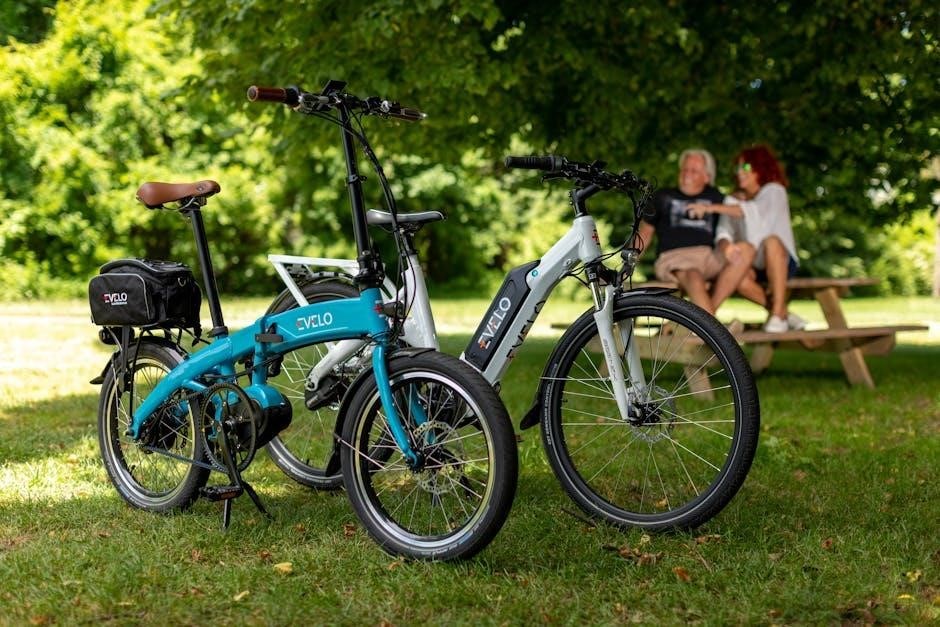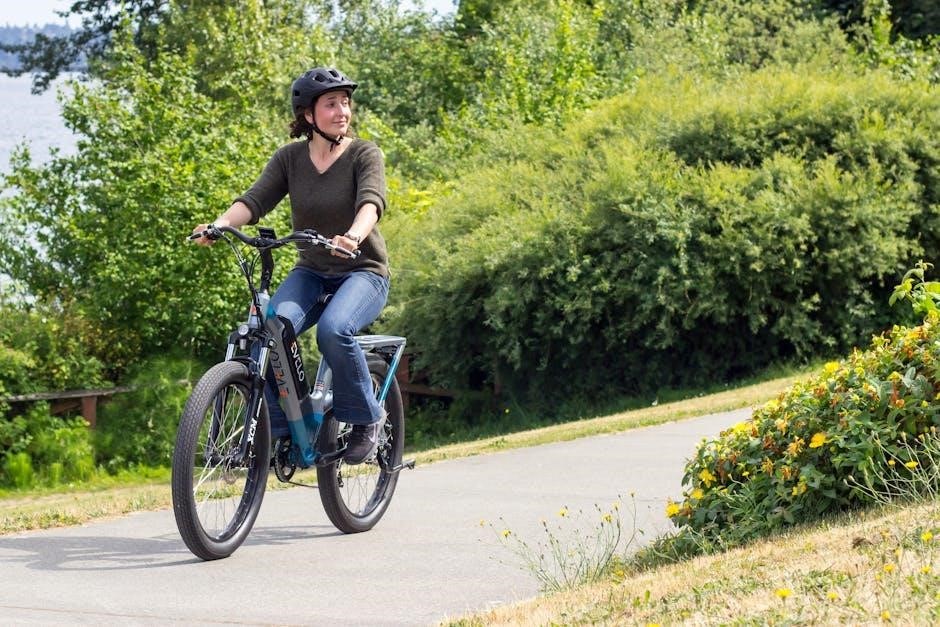This manual provides essential guidance for installing, operating, and maintaining the Reese Electric Brake Controller, ensuring safe and effective trailer braking performance. Always follow the instructions carefully.
1.1 Overview of the Reese Electric Brake Controller
The Reese Electric Brake Controller is a reliable device designed to regulate trailer brakes, ensuring smooth and controlled stopping. It features adjustable output control, boost settings, and manual override functionality. Suitable for 2, 4, 6, and 8 brake systems, it offers versatility for various towing needs. Proper installation and usage are critical for optimal performance and safety.
1.2 Importance of Proper Installation and Use
Proper installation and use of the Reese Electric Brake Controller are critical for ensuring safe and reliable trailer braking. Incorrect wiring or setup can lead to degraded performance or system failure. Always follow the manual’s instructions to maintain optimal functionality and avoid potential hazards during towing operations.
Components of the Reese Electric Brake Controller
- Output (Gain) Control: Adjusts braking power sent to the trailer brakes.
- Boost Control: Enhances braking performance for different trailer weights.
- Manual Slide Control: Manually applies trailer brakes when needed.
- Bracket Mounting Holes: Secures the controller in the tow vehicle.
- XLED Display: Provides visual feedback on braking activity.
2.1 Output (Gain) Control
The Output (Gain) Control adjusts the braking power delivered to the trailer’s brakes. Turning the knob increases or decreases the gain, ensuring smooth and proportional braking. Proper adjustment prevents over- or under-braking, enhancing safety and control while towing. Always test the setting with a loaded trailer under various conditions to ensure optimal performance.
2.2 Boost Control
The Boost Control feature enhances braking performance by increasing the power sent to the trailer brakes during stops. It is particularly useful for heavier trailers or when towing in hilly terrain. Turning the knob increases the boost level, providing firmer braking. Adjust the setting based on the trailer’s weight and driving conditions to achieve smooth, controlled stops without over-braking.
2.3 Manual Slide Control
The Manual Slide Control allows for manual activation of the trailer brakes, providing additional control during towing. Located on the front of the unit, this feature permits gradual or immediate braking without relying on the vehicle’s brakes. It is ideal for slowing down on steep inclines or when needing precise control over the trailer’s braking performance in various driving conditions.
2.4 Bracket Mounting Holes
The bracket mounting holes are designed to securely fasten the Reese Electric Brake Controller to your vehicle. Made of durable metal, these holes ensure a stable installation and proper alignment. Use the provided screws to mount the unit, ensuring a snug fit. Always clean the area before installation to avoid interference with the controller’s performance and longevity. Follow the manual’s guidelines for precise mounting.
2.5 XLED Display
The XLED display provides clear visual feedback on brake activity, output levels, and system status. Its bright, easy-to-read interface ensures you can monitor the controller’s functions at a glance. The display indicates when brakes are applied and shows current settings, helping you maintain control and ensure safe towing operations. This feature enhances overall usability and towing confidence.
Installation Instructions
Disconnect the negative battery cable before wiring. Mount the controller securely, ensuring proper alignment. Connect wires according to the diagram, and test the system to ensure correct functionality.
3.1 Tools and Materials Required
Ensure you have a wiring diagram, assorted end wrenches, screwdrivers, and ring terminals. Mounting hardware includes screws and brackets. Use a 20-amp in-line fuse for added electrical protection. Verify all components are included before starting the installation process to avoid delays. Proper tools ensure a safe and efficient setup of your brake controller system.
3;2 Mounting the Brake Controller
Maintain a 12-volt negative ground system for installation. Secure the brake controller firmly using the provided mounting bracket and screws. Ensure the area behind the panel is clear before drilling to avoid damage. Keep the unit away from heat sources and ensure proper alignment for accurate operation. Avoid exposing the controller to direct moisture or extreme temperatures during installation.
3.3 Wiring Connections
Connect the black wire to the vehicle’s battery and the blue wire to the brake pedal switch. Use the provided wiring adapter to plug into the vehicle’s electric brake control harness. Ensure all connections are secure and follow the wiring diagram. Disconnect the negative battery cable before starting the wiring process to avoid electrical shocks.
Understanding Boost Control
Boost Control enhances braking power by adjusting the energy sent to the trailer brakes, improving stopping performance, especially with heavy loads or steep descents. It ensures safer towing.
4.1 Function of Boost Control
The Boost Control feature amplifies the braking signal sent to the trailer brakes, providing additional stopping power when needed. This function is particularly useful for heavier trailers or when driving in challenging conditions, as it ensures faster and more controlled braking responses, enhancing overall safety while towing.
4.2 Adjusting Boost Settings
Adjust the Boost Control by turning the dial clockwise to increase braking power for heavier trailers or counterclockwise for lighter loads. Proper adjustment ensures optimal braking performance, preventing over-braking or inadequate stopping power. Test the settings by braking gently to confirm smooth and balanced trailer brake activation under various towing conditions.
Manual Control Features
The manual control, located on the front right, allows direct activation of trailer brakes for gradual speed reduction or emergencies, enhancing towing control and safety.
5.1 Location and Operation
The manual control is situated on the front-right of the brake controller unit. It enables direct activation of the trailer brakes, allowing drivers to apply them smoothly and independently for precise control during towing operations, ensuring enhanced safety and maneuverability on the road.
5.2 When to Use Manual Control
The manual control is ideal for situations requiring direct brake application, such as descending steep hills or needing immediate trailer brake engagement. It allows drivers to apply trailer brakes independently of the vehicle’s brakes, enhancing control and safety during towing. Use this feature when additional slowing power is needed without actuating the vehicle’s brake pedal.

Troubleshooting Common Issues
Common issues include improper wiring connections, blown fuses, or misaligned sensors. Check all connections, ensure proper fuse installation, and verify sensor alignment for optimal brake controller performance.
6.1 Common Problems and Solutions
- Wiring Issues: Check for loose connections or damaged wires. Ensure all wires are securely connected and free from damage.
- Blown Fuse: Replace the fuse with the correct rating specified in the manual to restore functionality.
- Sensor Misalignment: Adjust the sensor alignment to ensure proper braking response and system accuracy.
- Display Malfunction: Restart the controller or check for software updates to resolve display issues.
6.2 Diagnostic Steps
- Turn off the vehicle and engage the parking brake to ensure safety during diagnosis.
- Check the XLED display for error codes or unusual readings.
- Inspect wiring connections for damage or corrosion; ensure all connections are secure.
- Test the manual control to verify trailer brake activation.
- Consult the troubleshooting guide or contact technical support if issues persist.

Maintenance and Upkeep
Regularly clean and inspect components for wear or damage. Ensure all wiring connections are secure and free from corrosion. Perform software updates as recommended by the manufacturer.
7.1 Cleaning and Inspecting Components
Clean dirt and rustproofing from components regularly. Use a soft cloth and mild detergent to wipe down surfaces. Avoid harsh chemicals that may damage electrical parts. Inspect wiring connections for corrosion or damage. Check all components for wear or looseness. Replace any worn or corroded parts immediately to ensure optimal performance and safety. Regular inspections prevent unexpected issues.
7.2 Regular Software Updates
Regular software updates ensure optimal performance and safety. Check the manufacturer’s website for updates periodically. Follow the provided instructions to download and install the latest software version. Contact customer service at 1-888-785-5832 or visit www.tekonsha.com for assistance. Keeping the software updated enhances functionality and compatibility, ensuring your brake controller operates efficiently under all conditions. Always verify updates with trusted sources.
Safety Precautions
Ensure electrical safety by disconnecting the negative battery cable before wiring. Avoid electrical shocks and improper grounding. Keep RF devices like cell phones away from the controller.
8.1 Electrical Safety
Ensure electrical safety by disconnecting the negative battery cable before wiring. Avoid electrical shocks by proper grounding and following manufacturer guidelines. Keep RF devices like cell phones away from the controller to prevent interference. Always adhere to wiring instructions to avoid short circuits and potential fire hazards. Proper installation ensures reliable operation and safety.
8.2 Proper Usage Guidelines
Always read and follow the manual carefully before installing or operating the brake controller. Mount the unit in a visible, accessible location to ensure safe monitoring. Avoid mounting near RF-generating devices like cell phones or radios to prevent interference. Adjust settings as needed to ensure proper trailer brake performance and safe towing experiences;

Advanced Features and Settings
This section explores customizable brake settings and advanced integration options, allowing users to tailor performance and seamlessly connect with other vehicle systems for enhanced control.
9.1 Customizable Brake Settings
The Reese Electric Brake Controller offers adjustable settings to customize braking performance. Users can fine-tune output levels, boost sensitivity, and manual control responses to suit specific trailer weights and driving conditions, ensuring optimal braking efficiency and safety on the road.
9.2 Integration with Other Systems
The Reese Electric Brake Controller seamlessly integrates with various towing systems, including vehicle-specific wiring harnesses and adapters. Its compatibility with multiple brake systems ensures smooth operation across different setups, enhancing overall towing safety and efficiency while maintaining precise control over braking functions.

Technical Support and Warranty Information
For assistance, contact Reese customer service at 1-888-785-5832 or visit their website. The warranty covers defects in materials and workmanship for a specified period, ensuring reliable performance and support.
10.1 Contacting Customer Service
For technical assistance or warranty inquiries, contact Reese customer service at 1-888-785-5832 or visit their official website. Representatives are available Monday-Friday, 8 AM-6 PM EST, to address concerns and provide support. Ensure to have your product details ready for efficient service. Keep this manual handy for reference during the process.
10;2 Warranty Details
The Reese Electric Brake Controller is backed by a limited warranty covering defects in materials and workmanship for a specified period. The warranty applies to the original purchaser and is void if the product is modified or improperly installed. For full warranty terms, refer to the manual or visit the manufacturer’s website. Contact customer service for warranty-related inquiries.